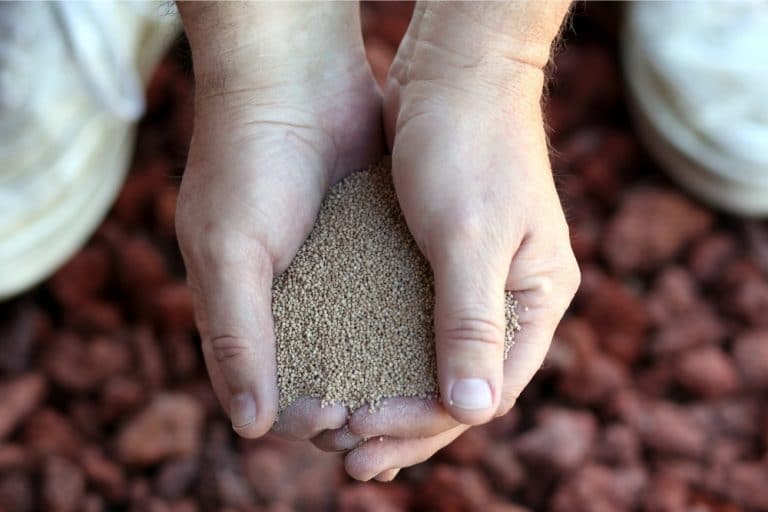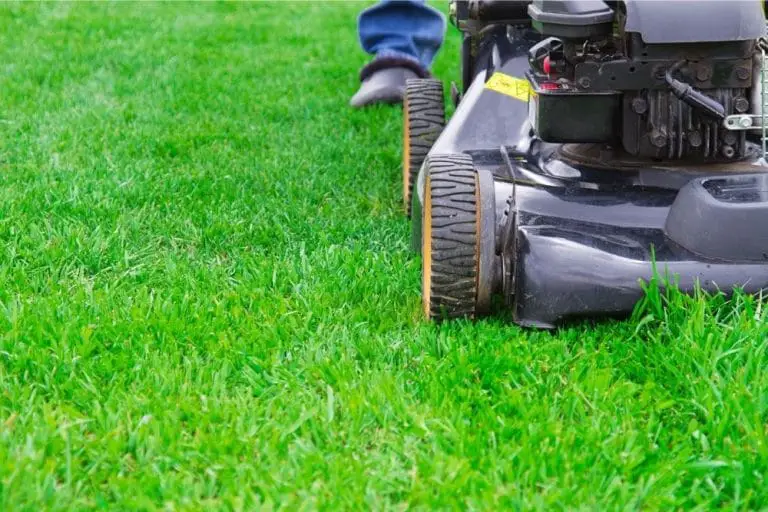Dethatching is when you remove a dense layer of dead and living organic material, known as thatch, on your lawn.
When it comes to dethatching your lawn, you can remove thatch manually, rent equipment, or hire a professional lawn care service. If you’re new to gardening you might be curious to know: Can you dethatch a wet lawn?
In this article, I will cover some key information about dethatching, including whether you can dethatch a wet lawn.
So, let’s get into it.
When Should You Dethatch Your Lawn?
The process of dethatching becomes more difficult the harder the turf is, so the ideal time to tackle the job is right before grass enters its period of strongest growth.
It’s difficult to predict the perfect time of year to dethatch your lawn, as different types of grasses tend to grow most vigorously during different seasons during the year and the answer therefore varies. However in the Uk the best times are typically Spring and early Autumn.
Generally speaking, the best time to dethatch (aka scarify) your lawn is also usually the best time to plant a lawn. As a result, some individuals will take the opportunity to level their lawns by rethatching and will then reseed afterwards.
Following the application of the new seed, they will then rake it into the soil and cover it with organic matter or further soil.
Before you dethatch your lawn, you may need to make sure that you know what type of grass your lawn is made of to ensure that you’ve chosen the right time to tackle the job. However for most people, Spring or Autumn are just fine.
Can You Dethatch A Wet Lawn?
You can dethatch a lawn when it is moist, not dry or wet. If you dethatch a lawn when it is too wet, you may yank the turf out by the roots.
As you can imagine, this will create large and unsightly bare spots in your beautiful lawn, so should be avoided to ensure your lawn’s health.

How To Dethatch A Lawn
There are a variety of ways that you can dethatch your lawn, whether you do it manually, rent equipment, or hire a qualified professional to complete the process to a high standard.
Manually
If you have a lawn that is on the smaller side or thatch less than 1 inch thick, then the best and most convenient option for dethatching is with a rake.
Not only are these hand rakes super accessible, but carrying out this job manually will cause the least amount of stress to your lawn.
A rake with hard tines may or may not work effectively to pull thatch to the soil surface.
Rent Equipment
To dethatch your lawn with equipment, you can rent a dethatcher known as a Scarifier (sometimes referred to as a power rake), vertical cutter or verticutter. This is a machine that has vertical blades that are designed to cut into the thatch layer and bring it to the lawn’s surface.
Before you get started with a dethatcher, blades must be set to a specific spacing based on the specific grass type your lawn is composed of. Generally speaking, the company that you hire the equipment from will do this, but you will need to make sure that you ask to make sure.
Usually, you will want the blades to cut around ½ inch into the soil, if at all. If you have questions, make sure that you seek advice from the rental company.
Buy A Machine
You can now buy budget machines that do a good enough job, can be used on a number of occasions, and end up being cheaper than hiring somebody in. You can buy a budget scarifier from places such as Lidl or even Screwfix or even Amazon (affiliate link).
A dethatcher (scarifier) will generally use 2 methods of removal. The more aggressive are metal blades (which can be both fixed or swinging) that will easily remove thatch. At the budget end, the machines will use small metal prongs (like a piece of solid metal wire bent at the end). These scarify but more gently, and usually, you will need to go over the lawn a few times. If you have time though these can work just fine!
Hire A Qualified Professional
If you’re new to lawn care or don’t feel confident using a dethatcher yourself, you might want to think about hiring a lawn service company to do this task. They will have the more expensive powerful machines and can usually get the job done in a much quicker time. Some companies will also remove the waste for you. From my own 20+ years in the industry, some companies can be too aggressive and leave bare spots, so ensure you find a company with excellent results. Typically a non-franchised company are more inclined to give that personal service.
Tips When Dethatching Your Lawn
- Dethatching is absolutely necessary to restore a lawn back to health, but it can make your lawn look a little patchy in places after the process is complete (this is normal and necessary if it’s not been done for a while). To improve your lawn health, reseed your lawn afterwards and supplement your lawn with fertiliser. This will help to thicken your lawn and will make it look fuller in time.
- You will want to dethatch when your soil is moist but not oversaturated with water, so make sure that you wait until the ground isn’t sodden. Failure to do this will result in large bare spots in your lawn.
- During times of drought and very dry weather, you will need to postpone dethatching – even if it’s needed.
- You will want to make sure to avoid heavy dethatching in mid- to late Autumn for any kind of lawn. This comes down to the fact that dethatching too late into the season can affect survival rates, as it causes grass to enter into the harsh winter season weaker and more damaged. Here in the Uk my personal “latest” time to scarify is mid October typically.
How Do You Prevent Thatch From Occurring In The Future?
In short, you can’t. Lawns naturally produce thatch year after year after year. I recommend dethatching 2 to 3 times a year lightly to keep the lawn in a good state. You may want to do a deep thorough scarify(dethatch) first to get the thatch level down to a good condition, and then look to lightly rake the lawn regularly. Typically I’d say in early Spring, early Summer, and Autumn as optimal times.
In Summary
You shouldn’t dethatch a lawn when it’s dry or wet, but when it is moist. If you dethatch your lawn when it is soaking wet, you could end up with big holes in your lawn. If this happens you will need to overseed with a similar seed type.
To ensure that your lawn remains in the best condition, you will need to maintain it with regular watering, mowing, fertilising, and aeration.



